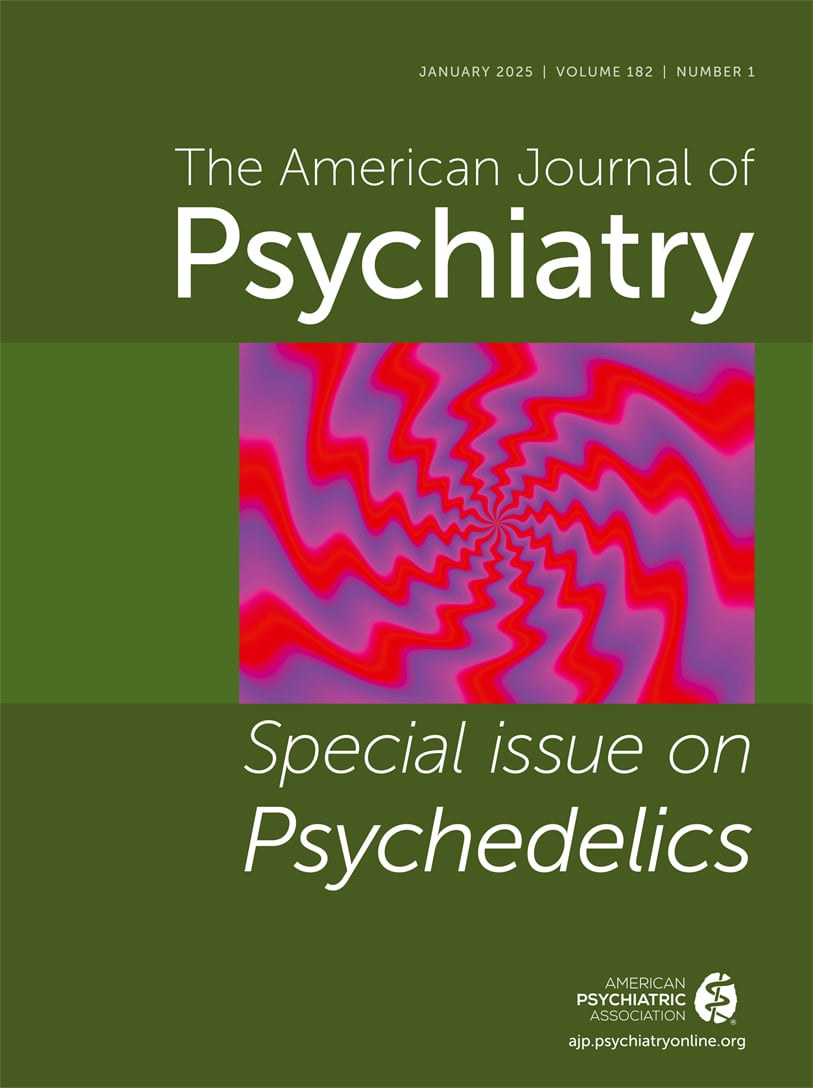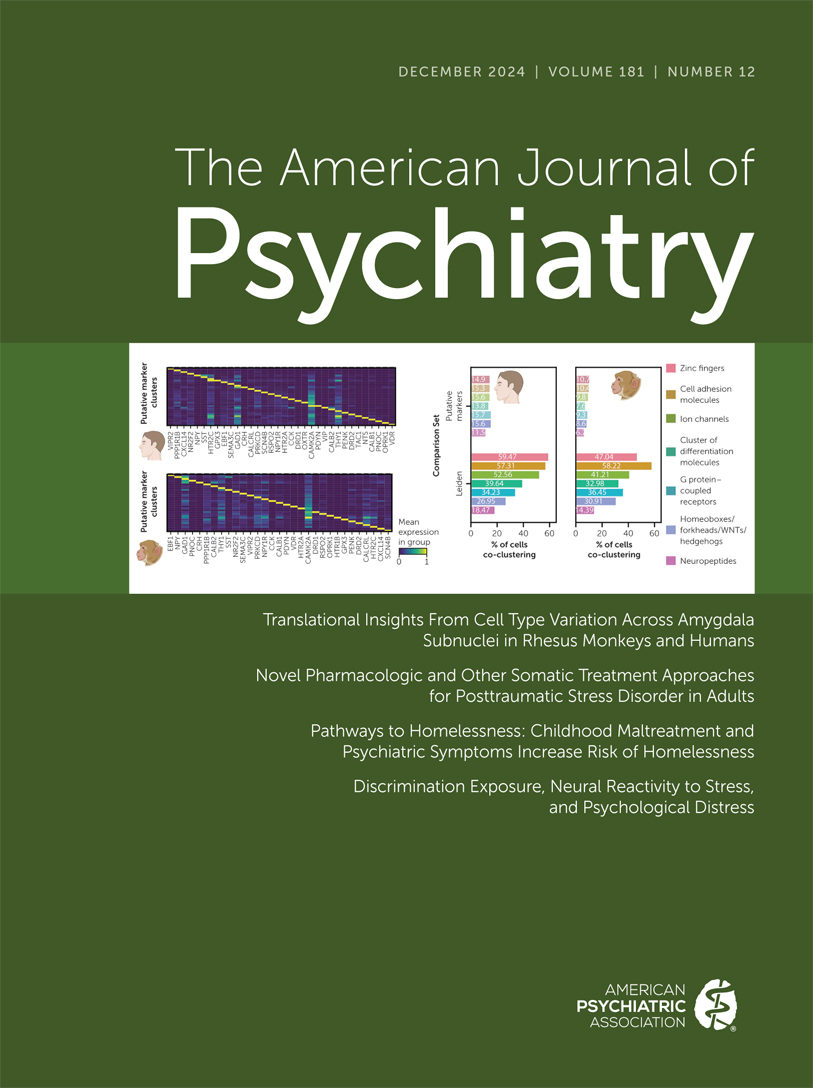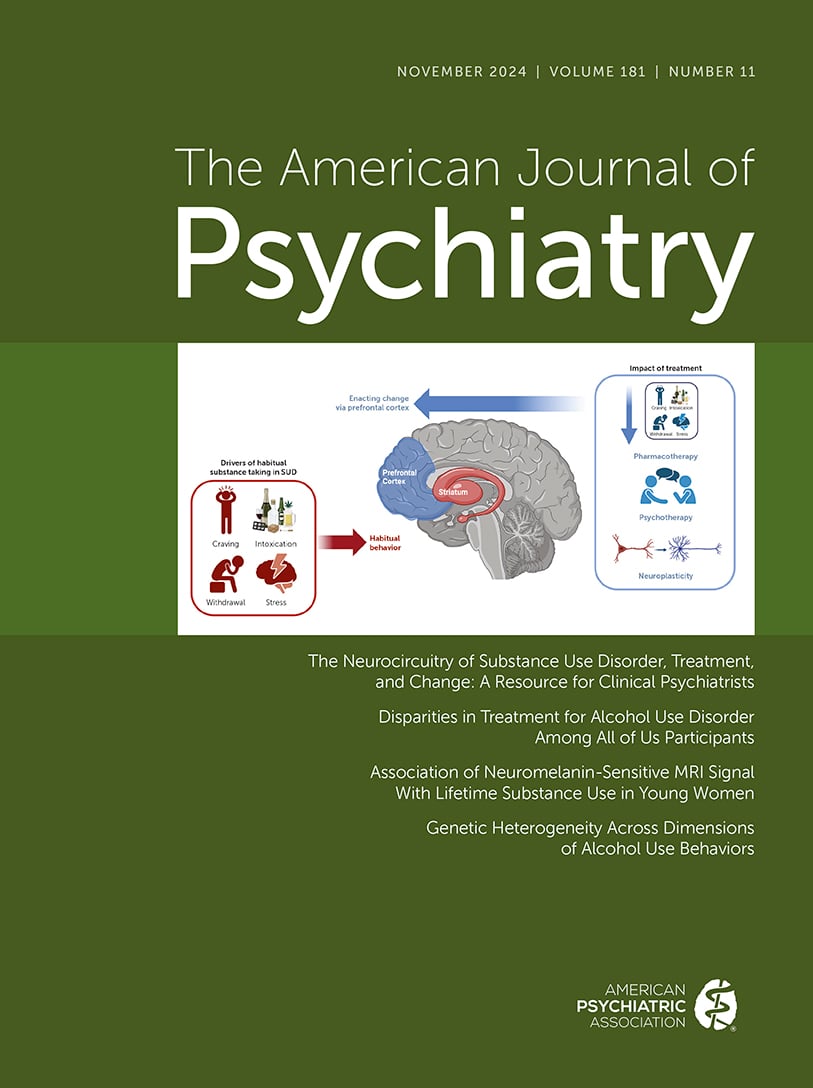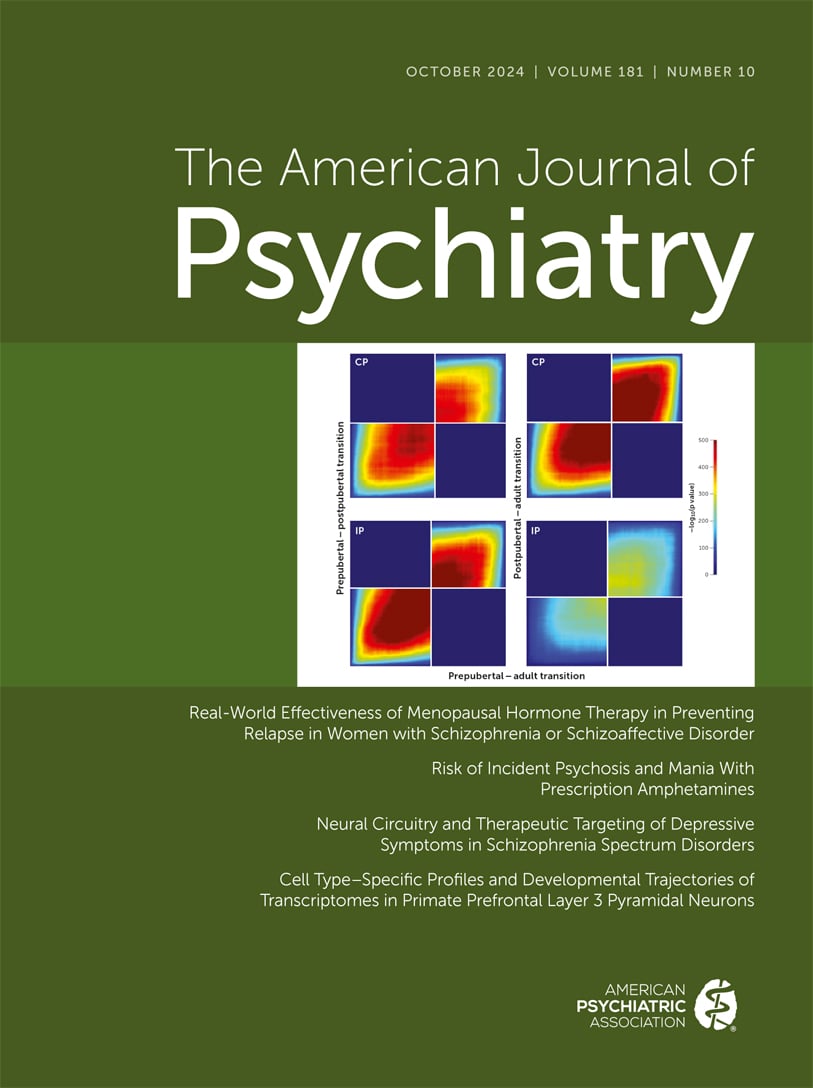American Journal of Psychiatry
- Volume 136
- Number 10
- October 1979
Publication date: 01 October 1979
Pages1251–1256The author provides a brief primer of the biologic processes in the brain that produce affect and implement communication. These neuroanatomic and neurophysiologic processes are presented in broad configuration rather than in detail and as distributive ...
https://doi.org/10.1176/ajp.136.10.1251Publication date: 01 October 1979
Pages1257–1262The authors determined the prevalence of sleep disorders in a general population through a survey of 1,006 representative households in the Los Angeles metropolitan area. They found an overall prevalence of current or previous sleep disorders in adults of ...
https://doi.org/10.1176/ajp.136.10.1257Publication date: 01 October 1979
Pages1263–1269The neuropsychological performance of alcoholic men in their late 30s (mean age, 37 years), some of whom has been abstinent for 3 weeks and others for 18 months, was compared with that of a group of men who drank occasionally. There were no differences ...
https://doi.org/10.1176/ajp.136.10.1263Publication date: 01 October 1979
Pages1270–1274Midlife has received recent attention but is still difficult to define. Women's developmental phases are most appropriately understood as different from men's, with a complex integration of biological context, family development and roles, and individual ...
https://doi.org/10.1176/ajp.136.10.1270Publication date: 01 October 1979
Pages1275–1277Eight elderly patients with mild memory impairment were given choline chloride, a drug that increases brain acetylcholine concentrations. After 16 g/day of choline for 7 days, average memory performance was not different from performance during pre- and ...
https://doi.org/10.1176/ajp.136.10.1275Publication date: 01 October 1979
Pages1278–1282The authors conducted a follow-up study of 81 rape victims to analyze the effect of adaptive or maladaptive response to rape on recovery over a 4-6 year period. They found that victims recovering fastest used more adaptive strategies, including positive ...
https://doi.org/10.1176/ajp.136.10.1278Publication date: 01 October 1979
Pages1283–1287The authors describe the long-term psychotherapy program developed by the Harvard Community Health Plan, focusing on its planning, implementation, and monitoring. The inclusion of coverage for chronic conditions in an HMO practice led to the development ...
https://doi.org/10.1176/ajp.136.10.1283Publication date: 01 October 1979
Pages1288–1291The authors identify a new syndrome of family violence--parent battering. Relevant dynamics include individual characteristics of the parent batterer, distortions in the generational authority hierarchy, the role of secrets and denial, and cultural ...
https://doi.org/10.1176/ajp.136.10.1288Publication date: 01 October 1979
Pages1292–1296When the psychiatrist functions as medical backup, i.e., in a setting of delegated clinical responsibility, a number of problems may arise, originating from factors in the patient, in the physician, in the staff member to whom responsibility is delegated, ...
https://doi.org/10.1176/ajp.136.10.1292Publication date: 01 October 1979
Pages1297–1301The authors report on the help-seeking experiences of people referred to community settings for aftercare on discharge from a state mental hospital in western Massachusetts. They present results that bear on three questions relevant to public policy ...
https://doi.org/10.1176/ajp.136.10.1297Publication date: 01 October 1979
Pages1302–1305Termination of psychotherapy has been infrequently examined in the literature and often ignored by many training programs. Not only are criteria and techniques for termination not often discussed, but termination as a therapeutic opportunity has been ...
https://doi.org/10.1176/ajp.136.10.1302Publication date: 01 October 1979
Pages1306–1309Production of a leukocyte migration inhibition factor by peripheral blood lymphocytes in response to challenge with gluten fractions was studied in hospitalized patients with schizophrenia and other psychoses compared with normal individuals and with ...
https://doi.org/10.1176/ajp.136.10.1306Publication date: 01 October 1979
Pages1310–1312The authors examined 183 children with autistic symptoms and found that the age-specific incidence rates of seizures in this sample were between 3 and 28 times the rates for children in the general population. The subjects classified as totally autistic ...
https://doi.org/10.1176/ajp.136.10.1310Publication date: 01 October 1979
Pages1313–1316The authors used a self-rating scale of thinking process disorganization to measure degree of temporal disorganization in a group of 38 rigorously categorized psychiatric inpatients. Patients diagnosed as having primary affective disorder, depressed type, ...
https://doi.org/10.1176/ajp.136.10.1313Publication date: 01 October 1979
Pages1317–1319The authors compared the treatment outcomes and ECT energy requirements of 10 patients treated with the Muller unilateral placement method (secondary electrode in the frontal position) with those of 10 matched patients treated with the unilateral ...
https://doi.org/10.1176/ajp.136.10.1317Publication date: 01 October 1979
Pages1320–1322The tendency for the cycle of abusive and neglectful parenting to be transmitted across generations has been well documented. The authors report on 40 families who broke this family pattern. The mechanisms for change used in these families included ...
https://doi.org/10.1176/ajp.136.10.1320Article
Article
Article
Article
Article
Article
Publication date: 01 October 1979
Pages1350-b–1350In "Sex Differences in the Prevalence of Severe Tardive Dyskinesia" by James M. Smith, Ph.D., and Daniel D. Dunn, M.A. (August 1979 issue) the second sentence in the last paragraph of the Results section should read as follows: "With a single symptom ...
https://doi.org/10.1176/ajp.136.10.1350-bPast Issues
View Issues Archive
Vol. 182 | No. 1

Vol. 181 | No. 12

Vol. 181 | No. 11
